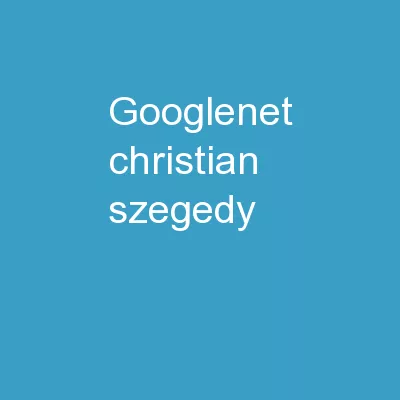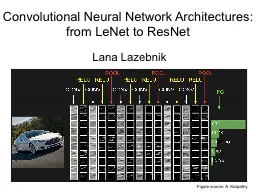PPT-GoogLeNet Christian Szegedy,
Author : aaron | Published Date : 2018-12-06
Google Pierre Sermanet Google Dumitru Erhan Google Wei Liu UNC Yangqing Jia Google Scott Reed University of Michigan Dragomir Anguelov Google Vincent Vanhoucke Google
Presentation Embed Code
Download Presentation
Download Presentation The PPT/PDF document "GoogLeNet Christian Szegedy," is the property of its rightful owner. Permission is granted to download and print the materials on this website for personal, non-commercial use only, and to display it on your personal computer provided you do not modify the materials and that you retain all copyright notices contained in the materials. By downloading content from our website, you accept the terms of this agreement.
GoogLeNet Christian Szegedy,: Transcript
Download Rules Of Document
"GoogLeNet Christian Szegedy,"The content belongs to its owner. You may download and print it for personal use, without modification, and keep all copyright notices. By downloading, you agree to these terms.
Related Documents














